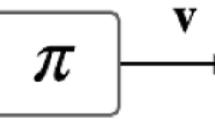Abstract
The design of serially concatenated codes has yet been dominated by optimizing asymptotic slopes of error probability curves. We propose mutual information transfer characteristics for soft in/soft out decoders to design serially concatenated codes based on the convergence behavior of iterative decoding. The exchange of extrinsic information is visualized as a decoding trajectory in the Extrinsic Information Transfer Chart (exit chart). By finding matching pairs of inner and outer decoder transfer characteristics we are able to construct serially concatenated codes whose iterative decoder converges towards low bit error rate at signal- to- noise ratios close to the theoretical limits.
Résumé
La conception de codes concaténés en série procède jusqu’à present de l’optimisation des pentes asymptotiques des courbes de probabilité d’erreur. Dans cet article, l’introduction de la fonction de transfert de l’information mutuelle des decodeurs à entrees et sorties pondérees permet de concevoir des codes en étudiant la convergence du décodage itératif. Le passage de l’information extrinsèque est alors représenté par une trajectoire dans le diagramme d’échange de l’information extrinsèque (diagramme EXIT). Ainsi, l’ajustement des fonctions de transfert des décodeurs internes et externes conduitil à l’élaboration de codes concaténés en série dont les performances approchent la limite de Shannon.
Similar content being viewed by others
References
Berrou (C.), Glavieux (A.), Thitimajshima (P.), “Near Shannon limit error-correcting coding and decoding: Turbo-codes,”Proc. Ieee Conf. on Commun., pp. 1064–1070, May 1993.
Shannon (C.E.), “A mathematical theory of communication,”Bell Syst. Tech. Journal, vol. 27, pp. 379–423, 623–656, July, Oct. 1948.
Richardson (T.J.), Shokrollahi (A.), Urbanke (R.), “Design of provably good low-density parity-check codes,”submitted ieee Trans. Inform. Theory, 1999.
Chung (S.Y.), Forney (G.D.), Richardson (T.J.), Urbanke (R.), “On the design of low-density parity-check codes within 0.0045 dB of the Shannon limit,”submitted ieee Comm. Lett., 1999.
Frey (B.J.), MacKay (D.J.C.), “Irregular turbo-like codes,”Proc. 2nd Internat. Symp. Turbo codes, pp. 67–72, Sept. 2000.
Jin (H.), Khandekar (A.), McEliece (R.), “Irregular repeat-accumulate codes,”Proc. 2nd Internal. Symp. Turbo codes, pp. 201–210, Sept. 2000.
Richardson (T.J.), Urbanke (R.), “The capacity of low-density parity-check codes under message-passing decoding,”submitted Ieee Trans. Inform. Theory, 1999.
Benedetto (S.), Divsalar (D.), Montorsi (G.), Pollara (R.), “Serial concatenation of interleaved codes: performance analysis, design and iterative decoding,”Ieee Trans. Inform. Theory, vol. 44, pp. 909–926, May 1998.
Ten Brink (S.), “Iterative decoding trajectories of parallel concatenated codes,” Proc.ieee/ITG Conf. on Source and Channel Coding, pp. 75–80, Jan. 2000.
Bahl (L.), Cocke (J.), Jelinek (R), Raviv (J.), “Optimal decoding of linear codes for minimizing symbol error rate,”Ieee Trans. Inform. Theory, vol. 20, pp. 284–287, March 1974.
Hagenauer (J.), Offer (E.), Papke (L.), “Iterative decoding of binary block and convolutional codes,”Ieee Trans. Inform. Theory, vol. 42, pp. 429–445, March 1996.
Battail (G.), “Pondération des symboles décodés par l’algo- rithme de Viterbi,”Ann. Télécommun., vol. 42, pp. 31–38, Jan. 1987.
Hagenauer (J.), Hoeher (P.), “A Viterbi algorithm with soft-decision outputs and its applications,”Proc. ieee Globecom Conf, pp. 1680–1686, Nov. 1989.
Lodge (J.), Young (R.), Hoeher (P.), Hagenauer (J.), “Separable map filters for the decoding of product and concatenated codes,”Proc. ieee Conf. on Commun., pp. 1740–1745, May 1993.
El Gamal (H.), Hammons (A.R.), “Analyzing the turbo decoder using the Gaussian approximation,”submitted ieee Journ. Sel. Areas of Comm., Jan. 2000.
Divsalar (D.), Dolinar (S.), Pollara (F.), “Low complexity turbo-like codes,”Proc. 2nd Internal. Symp. on turbo codes, pp. 73–80, Sept. 2000.
Wrberg (N.),Codes and decoding on general graphs. PhD thesis, Linköping University, 1996.
Cover (T.M.), Thomas (J.A.),Elements of Information Theory. New York: Wiley, 1991.
Ten Brink (S.), “Rate one-half code for approaching the Shannon limit by 0.1 dB,”Ieee Electron. Lett., vol. 36, pp. 1293–1294, July 2000.
Farvardin (N.), Vaishampayan (V.), “Optimal quantizer design for noisy channels: An approach to combined source-channel coding,”Ieee Trans. Inform. Theory, vol. 33, pp. 827–838, Nov. 1987
Author information
Authors and Affiliations
Corresponding author
Rights and permissions
About this article
Cite this article
Brink, S.t. Code characteristic matching for iterative decoding of serially concatenated codes. Ann. Télécommun. 56, 394–408 (2001). https://doi.org/10.1007/BF02995451
Received:
Accepted:
Issue Date:
DOI: https://doi.org/10.1007/BF02995451
Key words
- Error correcting code
- Concatenation
- Series connection
- Decoding
- Iteration
- Mutual information
- Algorithm convergence




